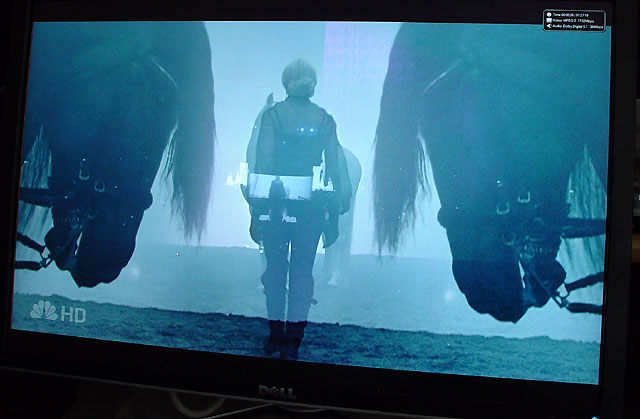Page 2
The video decoder engines.
We are looking at the latest mid-range graphics cards today from both NVIDIA and AMD(ATI). NVIDIA with their Purevideo HD technology and ATI with Avivo HD. We do this as only these products at the time of writing have dedicated core logic built in to handle all acceleration and post-processing of the content.
But first a small introduction to the wonderful world of HD.
HD terminology
The HDTV market continues to heat up, and who has not heard about terms like HD Ready? Let's run through some terms. HDTV stands for High Definition Television, the current image standard is know as Standard Definition. The high definition format uses up to 1080 lines to make up the picture you see on your TV compared to 576 for the current standard, HD will also be broadcasted in widescreen 16:9 format rather than the conventional 4:3 format. This will make for a truly cinematic experience.
Very blunt: HD = More lines = more pixels = better picture quality
In simple terms the image you will see with HD will have vastly improved image detail and color reproduction. But once you have the ability to display all that glory, why not optimize and enhance the content with your graphics card ?

Decoding VC-1 and H.264
To decode the content we need to learn how the content (movie) is written as data on the media (HD-DVD/Blu-Ray disc). The data on your HD-DVD or Blu-ray disc is written on there in a specific format. Pretty much we see two major codecs for both Blu-Ray and HD-DVD namely H.264 and VC-1.
VC-1 is ruler of the majority of releases ... 80% of all released are being released in the VC-1 format. Both Avivo HD and PureVideo HD provide hardware acceleration for decoding the compression routines used on both Blu-ray and HD DVD movies: H.264, VC-1, and MPEG-2 (TS,TP). NVIDIA however only partly handles VC-1, we'll explain later.
MPEG stands for Motion Pictures Encoding Group.
MPEG is divided into 4 layers. MPEG Layer 1, MPEG Layer 2, MPEG Layer 3, MPEG Layer 4.
MPEG Layer 1 is a video and audio format which is capped at 640x480 resolutions, MPEG layer 1 was a very early codec, and was primarily used for Video CDs (VCDs). VCDs never caught on in North America and Europe. however in Asia ( China, Japan, Korea), VCD replaced VHS. A lot of old videos are encoded in Mpeg 1, some are ripped straight from VCDs.
MPEG Layer 2 this is the most widely used video codec, It's primarily used for digital Cable and Satellite Broadcasts. It's also used in DVD. Mpeg Layer 2 has no restrictions on resolution nor bitrate, which is why SONY used it on BLU-RAY for their launch titles. MPEG Layer 2 is better at compression than layer 1, but still pretty large in size compared to MPEG layer 4.
MPEG Layer 3 this is the most famous codec used on the planet. MPEG Layer 3 is better known as MP3. This is the infamous music codec that started out as under ground but evolved to a massively mainstream audience, thanks to napster and Apple's I-pod (hey who doesn't own one right?).
MPEG Layer 4 actually has been around for a while. Divx, Xvid, VC1, AVC, AAC, H.264 are all MPEG 4. AVC and VC1 are being seen as as the next-generation codecs. AVC by Sony, VC1 by Microsoft.VC-1
VC-1 is a video codec based on Windows Media Video Version 9. Both HD DVD and Blu-ray Disc have adopted
VC-1 as a codec, meaning all video playback devices will be capable of decoding and playing video-content compressed using VC-1. VC-1 minimizes the complexity of decoding high-definition content through improved intermediate stage processing and more robust transforms. VC-1 decodes HD video twice as fast as H.264, while offering two to three times better compression than MPEG-2.H.264
H.264 is also known as MPEG-4 AVC (Advanced Video Coding), is a video compression standard that offers significantly greater compression than its predecessors while retaining exceptionally good image quality.The intent of the H.264/AVC project was to create a standard capable of providing good video quality at substantially lower bit rates (e.g., half or less) than previous standards (e.g., relative to MPEG-2, H.263, or MPEG-4 Part 2), without increasing the complexity of design so much that it would be impractical (or excessively expensive) to implement.
Both HD DVD and Blu-ray Disc support both formats, yet have adopted VC-1 as a mandatory video standard.
